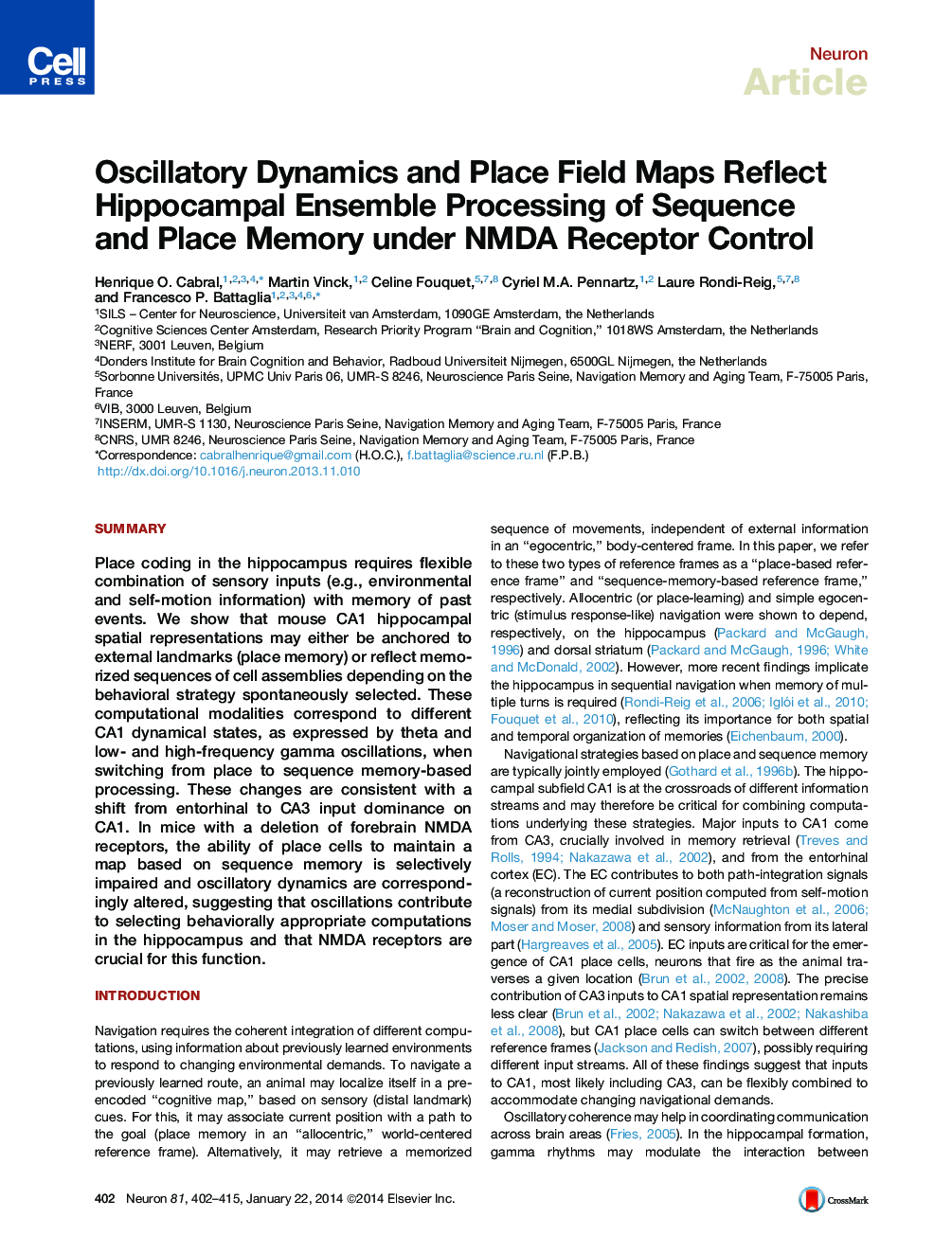| Article ID | Journal | Published Year | Pages | File Type |
|---|---|---|---|---|
| 4321203 | Neuron | 2014 | 14 Pages |
•The starmaze task allows discrimination of egocentric and allocentric space maps•CA1 NR-1 KO place cells cannot maintain an egocentric-based map•Low gamma, theta oscillatory dynamics are increased for egocentric processing•Oscillatory correlates of spatial computations are disrupted in CA1 NR-1 mice
SummaryPlace coding in the hippocampus requires flexible combination of sensory inputs (e.g., environmental and self-motion information) with memory of past events. We show that mouse CA1 hippocampal spatial representations may either be anchored to external landmarks (place memory) or reflect memorized sequences of cell assemblies depending on the behavioral strategy spontaneously selected. These computational modalities correspond to different CA1 dynamical states, as expressed by theta and low- and high-frequency gamma oscillations, when switching from place to sequence memory-based processing. These changes are consistent with a shift from entorhinal to CA3 input dominance on CA1. In mice with a deletion of forebrain NMDA receptors, the ability of place cells to maintain a map based on sequence memory is selectively impaired and oscillatory dynamics are correspondingly altered, suggesting that oscillations contribute to selecting behaviorally appropriate computations in the hippocampus and that NMDA receptors are crucial for this function.
